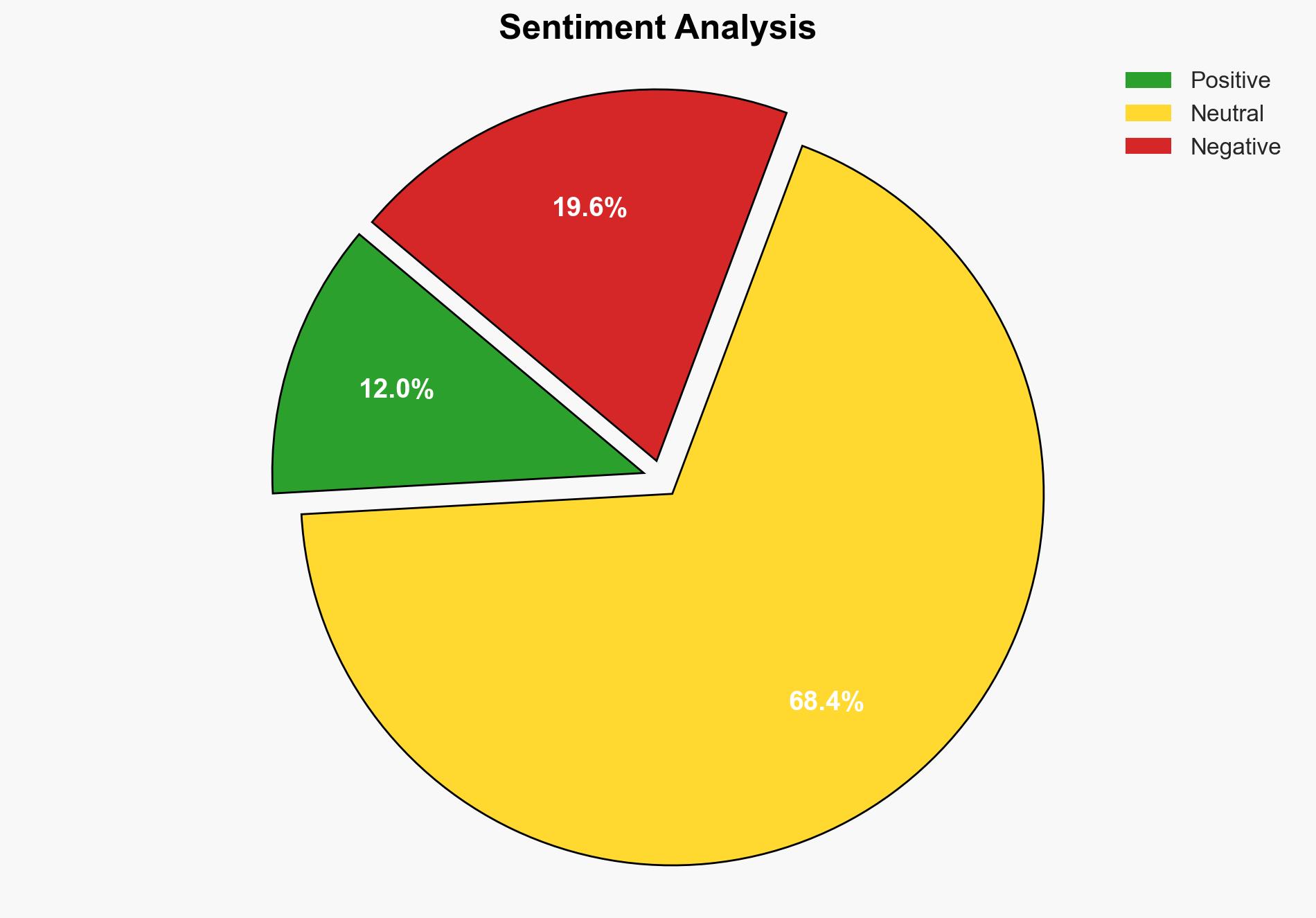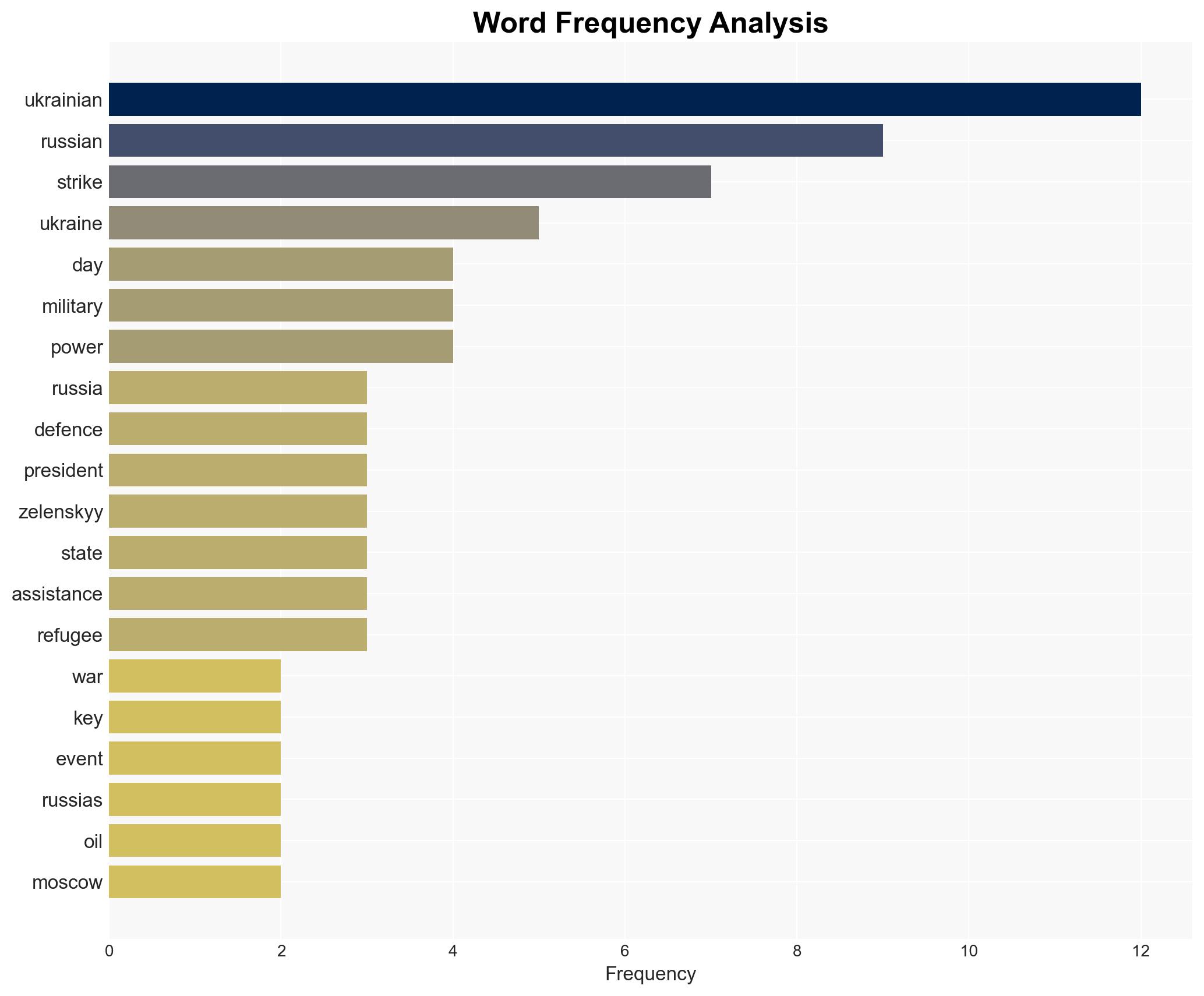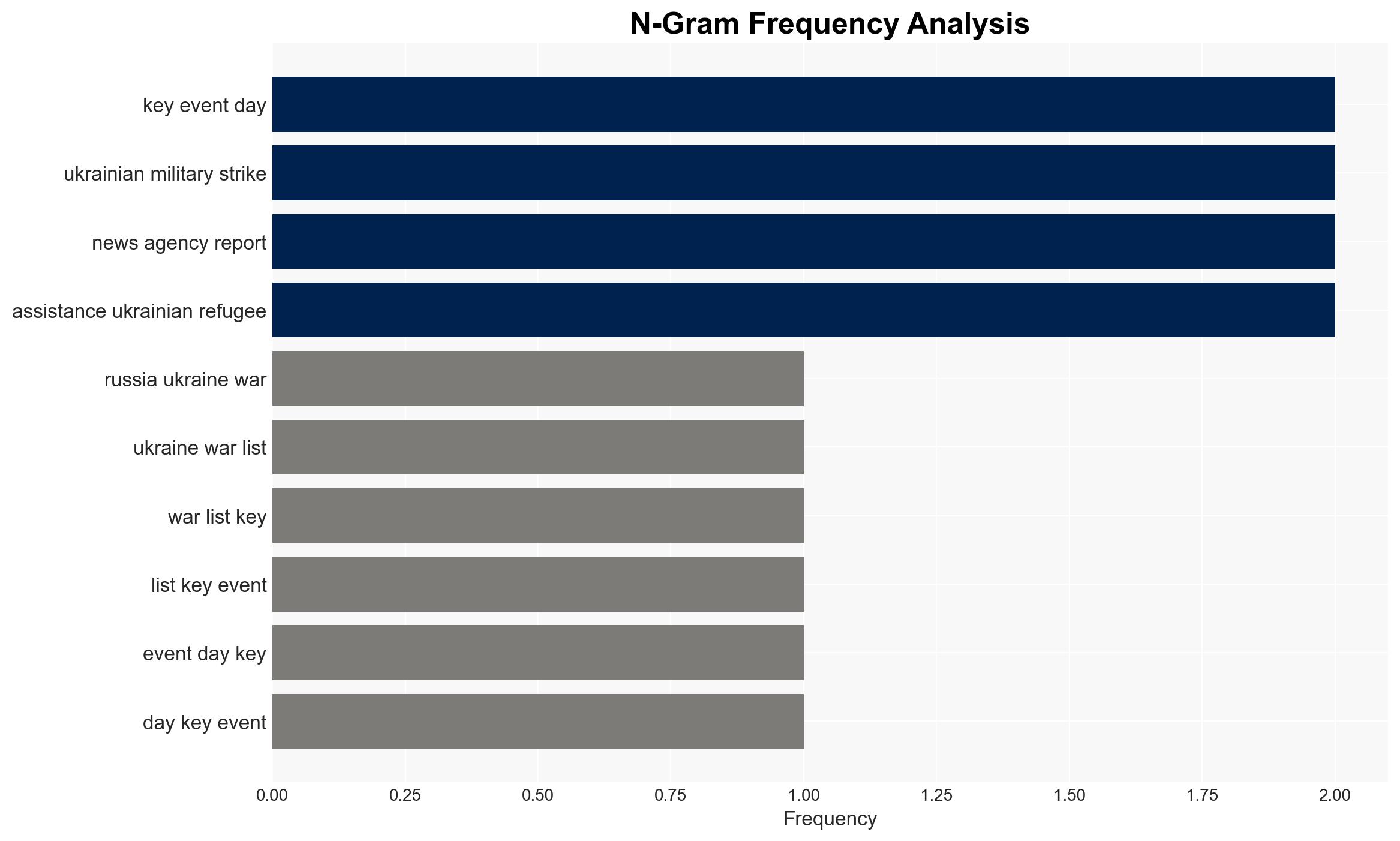Russia-Ukraine war List of key events day 1361 – Al Jazeera English
Published on: 2025-11-16
AI-powered OSINT brief from verified open sources. Automated NLP signal extraction with human verification. See our Methodology and Why WorldWideWatchers.
Intelligence Report: Russia-Ukraine Conflict – Strategic Analysis
1. BLUF (Bottom Line Up Front)
With a moderate confidence level, the most supported hypothesis is that Russia is intensifying its military operations to consolidate control over strategic regions in Ukraine, while Ukraine is focusing on defensive repositioning and international diplomatic efforts. Recommended actions include bolstering Ukraine’s air defense capabilities and enhancing diplomatic engagements to facilitate humanitarian aid and conflict resolution.
2. Competing Hypotheses
Hypothesis 1: Russia is escalating military operations to secure strategic territories and weaken Ukraine’s military infrastructure, aiming for a decisive advantage before winter sets in.
Hypothesis 2: Russia’s recent military actions are primarily defensive, aimed at protecting its occupied territories and responding to Ukrainian counterattacks, with an emphasis on maintaining current territorial gains.
Analysis indicates that Hypothesis 1 is more likely due to the reported strikes on key Ukrainian infrastructure and the capture of villages in the Zaporizhia region, suggesting offensive intentions rather than purely defensive measures.
3. Key Assumptions and Red Flags
Assumptions: It is assumed that Russia’s military strategy is driven by territorial ambitions and geopolitical leverage. Ukraine’s military strategy is assumed to be focused on defense and international support.
Red Flags: The potential for misinformation and propaganda from both sides could skew perceptions of military successes and failures. The reported prisoner exchange talks may be used as a strategic distraction.
4. Implications and Strategic Risks
The continued escalation poses significant risks of further humanitarian crises, especially in urban centers like Kyiv. Politically, the conflict could strain international alliances, particularly if energy supplies are disrupted. Economically, prolonged conflict may impact global markets, particularly in energy and agriculture. Cyber and informational warfare could escalate, affecting both military and civilian infrastructure.
5. Recommendations and Outlook
- Enhance Ukraine’s air defense systems to mitigate the impact of Russian missile strikes.
- Facilitate diplomatic channels to support humanitarian aid and potential ceasefire negotiations.
- Best-case scenario: Successful diplomatic interventions lead to a ceasefire and negotiations.
- Worst-case scenario: Escalation leads to broader regional conflict, drawing in neighboring countries.
- Most-likely scenario: Continued conflict with intermittent diplomatic engagements and localized ceasefires.
6. Key Individuals and Entities
Volodymyr Zelenskyy, Ukrainian President; Russian Ministry of Defence; Nataliia Khodemchuk, victim of recent strikes; Karol Nawrocki, Polish President; Dubravka Djedovic Handanovic, Serbian Energy Minister.
7. Thematic Tags
Regional Focus, Regional Focus: Eastern Europe, Russia, Ukraine
Structured Analytic Techniques Applied
- Causal Layered Analysis (CLA): Analyze events across surface happenings, systems, worldviews, and myths.
- Cross-Impact Simulation: Model ripple effects across neighboring states, conflicts, or economic dependencies.
- Scenario Generation: Explore divergent futures under varying assumptions to identify plausible paths.
Explore more:
Regional Focus Briefs ·
Daily Summary ·
Support us
·





